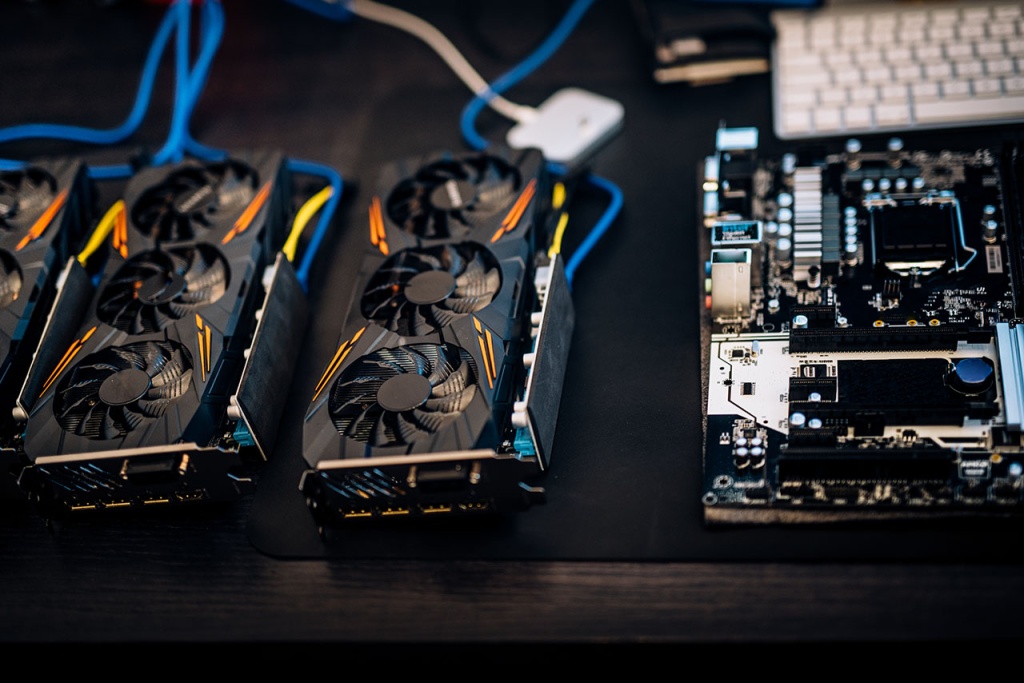The cryptocurrency world is new and becoming increasingly popular. As cryptocurrencies become more mainstream, many of the uninitiated are often caught wondering what specific terms and phrases mean. One of the phrases you might have come across when reading or hearing about cryptocurrencies is “Proof-of-Work.”
Success in the cryptocurrency industry requires having a good amount of knowledge and understanding of key concepts regarding how everything works. Today’s post is a guide titled “What is Proof-of-Work?” and it will explain everything you need to know about the cryptographic algorithm used by several major cryptocurrencies.
What Is Proof-Of-Work?
Proof-of-work is the name given to the validation method used to secure transactions on a blockchain network. Many cryptocurrencies like Ethereum and Bitcoin use a proof-of-work validation method. Understanding proof-of-work requires understanding the concept of distributed ledgers.
Cryptocurrencies operate on decentralized networks called blockchain networks. Cryptocurrencies do not have any central authority that keeps track of and facilitates transactions carried out using the cryptocurrency. Instead, cryptocurrencies rely on decentralized ledgers that keep track of all the transactions taking place on the network.
Proof-of-work is a validation method that allows new transactions to be added to the blockchain network without the need to rely on a central authority to prove that the transactions are valid and properly documented.
Proof-of-work is essentially an algorithm used to confirm transactions, creating new blocks on a blockchain network. In proof-of-work, miners on a cryptocurrency’s blockchain network compete with each other to complete transactions on the network by lending their computing power. Miners are rewarded with a portion of the transaction amount as a reward for facilitating the validation process.
How Does Proof-Of-Work Work?
Let’s consider Ethereum as an example to understand how the proof-of-work model works. Ethereum is a blockchain network with a shared ledger containing information about all the transactions that have ever taken place on the network. The distributed ledger contains blocks of data connected to each other in an immutable sequence that cannot be altered or changed once recorded on the network.
Proof-of-work plays an essential role in adding new blocks to the Ethereum blockchain network. Miners are users on the cryptocurrency network that execute proof-of-work to “mine” cryptocurrencies. These miners operate specialized nodes that solve complex mathematical problems, lending their computing power to the blockchain network. Through this process, these miners compete with each other to execute matching computations that add a new block of data to the blockchain network.
The proof-of-work mechanism prevents users from double-spending their coins and ensures that the blockchain network is secure and impervious to manipulation.
Here is a step by step view of how proof-of-work validation works:
- Transactions are pooled: Cryptocurrency users initiate transactions on the blockchain network, which are all pooled into a block.
- Miners begin mining: Cryptocurrency miners begin contributing computing power to become the first node to resolve complex mathematical problems. Showing proof of lending this computational power is what earns a specific miner to reap the rewards for processing the block of transactions.
- A new block is processed: The miner who achieves the winning mathematical equation first processes the block of transactions and pints more of the cryptocurrency. The miner also adds a new block to the cryptocurrency’s blockchain.
- The blockchain network is updated: The new block added by the winning miner is added to the blockchain and distributed to the other nodes that also maintain a copy of the blockchain network, completing the process.
Advantages & Disadvantages Of Proof-Of-Work
This section of the guide will discuss a few pros and cons of the Proof-of-Work validation method:
Pros of Proof-of-Work
Widely used validation method
Bitcoin was the world’s first cryptocurrency, and it created the basis for the proof-of-work validation method. It is used by many of the major cryptocurrencies, including Ethereum.
Secure validation method
The expensive equipment required to validate transactions and add new blocks of data to the blockchain network makes the entire distributed ledger secure and prevents manipulation or alterations.
Provides rewards
Miners lending computational power to validate the transactions are rewarded with cryptocurrency for providing the service.
Cons of Proof-of-Work
Energy-intensive
Proof-of-work validation requires a lot of computational energy, making it a highly energy-intensive method to mine cryptocurrencies.
Requires specialized hardware
Cryptocurrency miners who want to compete with the rest may need to invest in specialized mining hardware that gives them an edge over others to execute winning mathematical equations and earn rewards.
Difficult for individual miners to compete
Many massive cryptocurrency mining pools and crypto mining companies use a substantial amount of specialized hardware to gain an edge in competing for the mining rewards. It means that individual miners with computer systems at home might not be able to generate meaningful profits.
Major Cryptocurrencies That Use Proof-Of-Work
The energy-intensive nature of the proof-of-work protocol has made it fall out of favor among many cryptocurrency enthusiasts. The rising concerns of global warming and climate change has led to many cryptocurrency networks moving away from the validation method. However, many of the largest cryptocurrencies still use the proof-of-work protocol, including:
- Bitcoin
- Ethereum
- Monero
- Litecoin
- Dogecoin
Ethereum’s blockchain network is working toward moving away from the proof-of-work protocol and opting for a more energy-efficient validation method. Many new cryptocurrencies emerging today are already using an alternative to proof-of-work to facilitate faster transactions and reduce transaction times through a less energy-intensive method.
Wrapping It Up

Here are a few key takeaways about proof-of-work to remember:
- It is a method that uses computing power to achieve a consensus and validate transactions on a blockchain network.
- Cryptocurrencies using this protocol require large networks of computers run by crypto miners to verify and track transactions to mint new currency.
- Proof-of-work transactions are maintained on a distributed ledger called the blockchain network.
Proof-of-work is the first validation method introduced by Bitcoin for the cryptocurrency world, but it is slowly being phased out by the broader industry for a more environmentally viable alternative that is less energy-intensive and faster method: Proof-of-Stake.
If you found this post explaining Proof-of-Work helpful, you will be delighted to know that there is a lot more where that came from. Keep following our blog to read more informative posts on everything about cryptocurrencies and blockchain technology.



